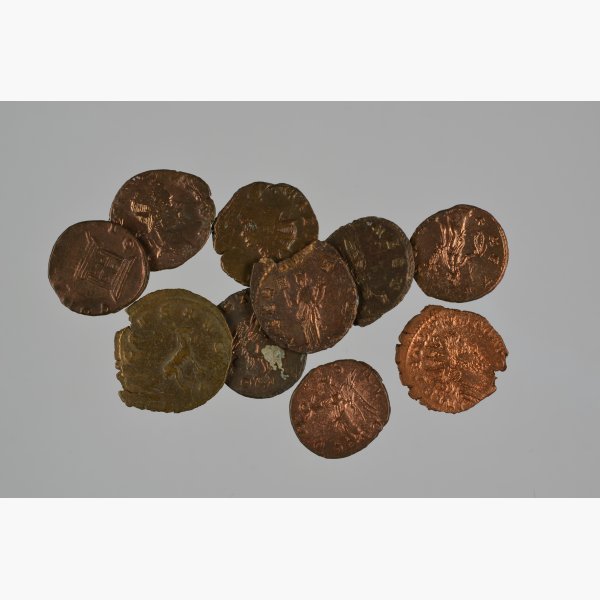
Goadby Marwood Coin Hoard

These essential cookies always need to be on because the website cannot function properly without them. They can only be disabled by changing your browser preferences.
These cookies allow us to count visits and traffic sources so we can measure and improve the performance of our site. They help us to know which pages are the most and least popular and see how visitors move around the site. All information these cookies collect is aggregated and therefore anonymous. If you do not allow these cookies we will not know when you have visited our site, and will not be able to monitor its performance.
These cookies enable the website to provide enhanced functionality and personalisation. They may be set by us or by third party providers whose services we have added to our pages. If you do not allow these cookies then some or all of these services may not function properly.

AD 200-300
Goadby Marwood
This is a large hoard of 1725 coins that was buried in the lower half of a grey ware jar. It contains bronze coins issued by the emperors Tetricus I, Claudius II, Gallienus and Victorinus. They are known as 'radiate' coins as the emperors wear a spiky crown symbolising the rays of the sun, an association with the cult of Sol Invictus. The coins are of the denomination antoninianus which were a debased type of coin popularly known not to be worth as much as their face value and therefore a cause of inflation.
Find out more about this coin hoard on the Portable Antiquities Scheme database.

AD 300 - 409
Sproxton
This hoard of 173 bronze nummi coins, were mostly issued by Constantine the Great.
Find out more about this coin hoard on the Portable Antiquities Scheme database.
Images of the discovery of the hoard can be found on Image Leicestershire.

We are a Visit England Quality Assured Visitor Attraction.
© Melton Carnegie Museum 2025 | Cookies | Privacy | Disclaimer | Sitemap | Accessibility Statement
Website by Cuttlefish